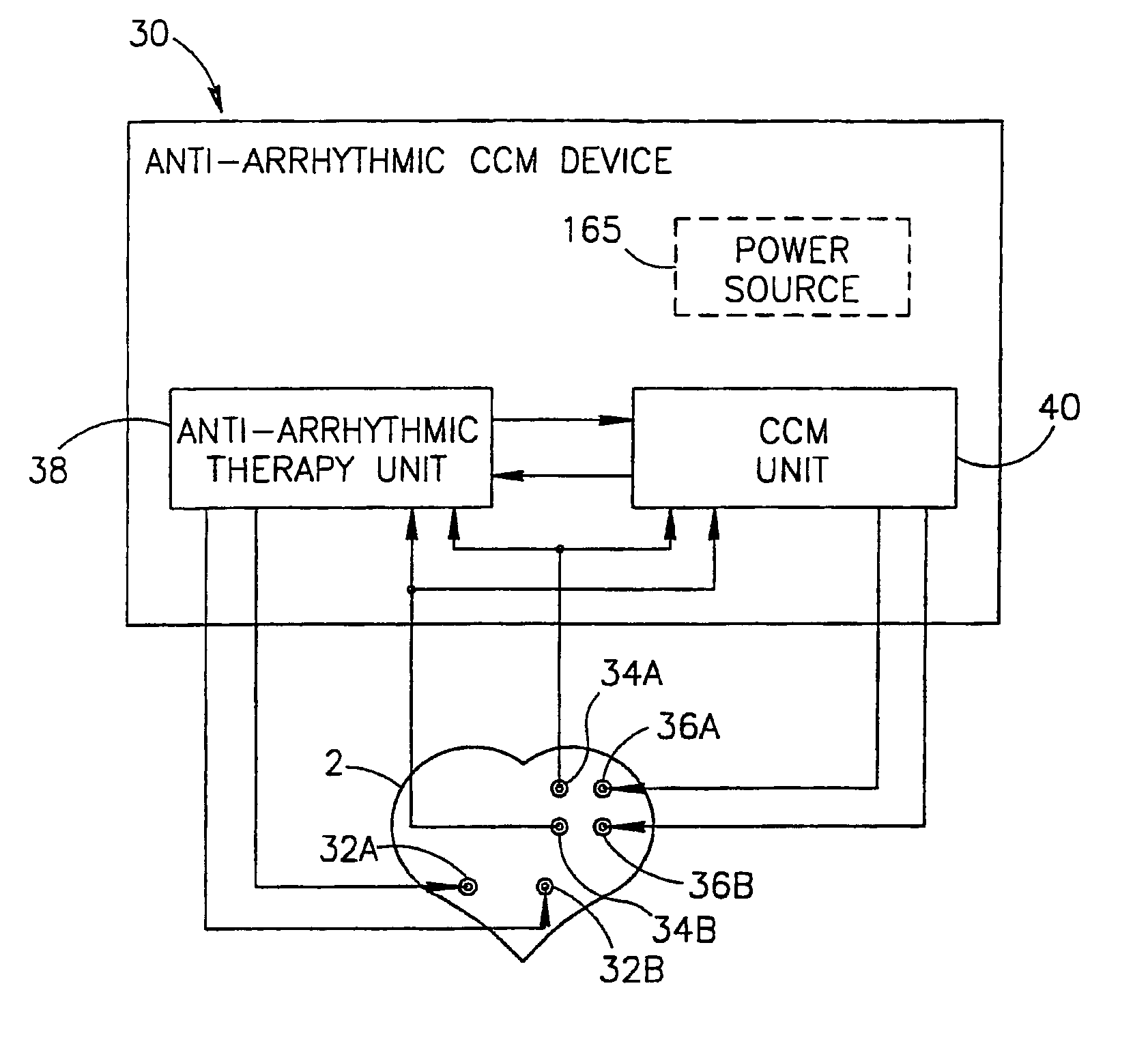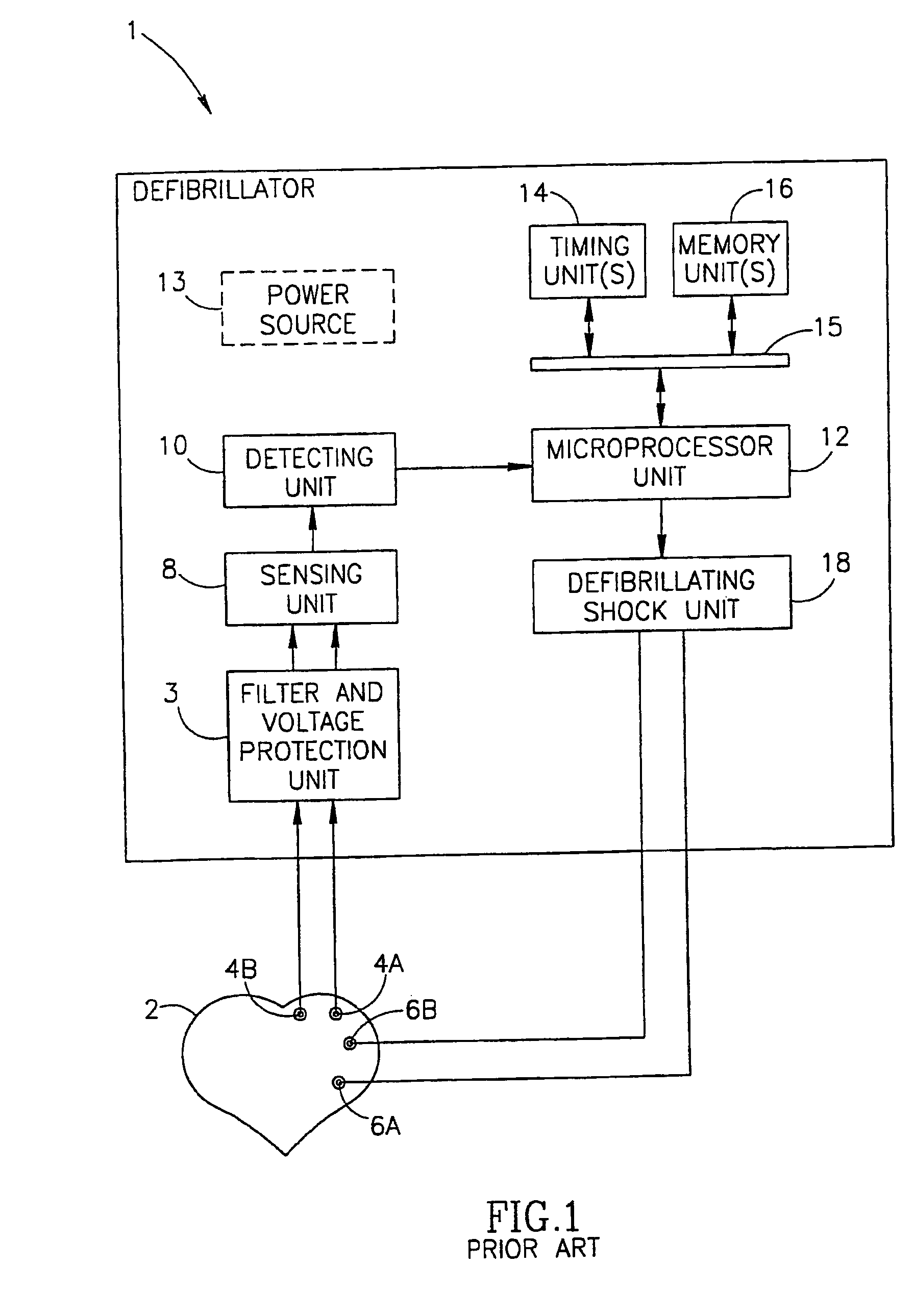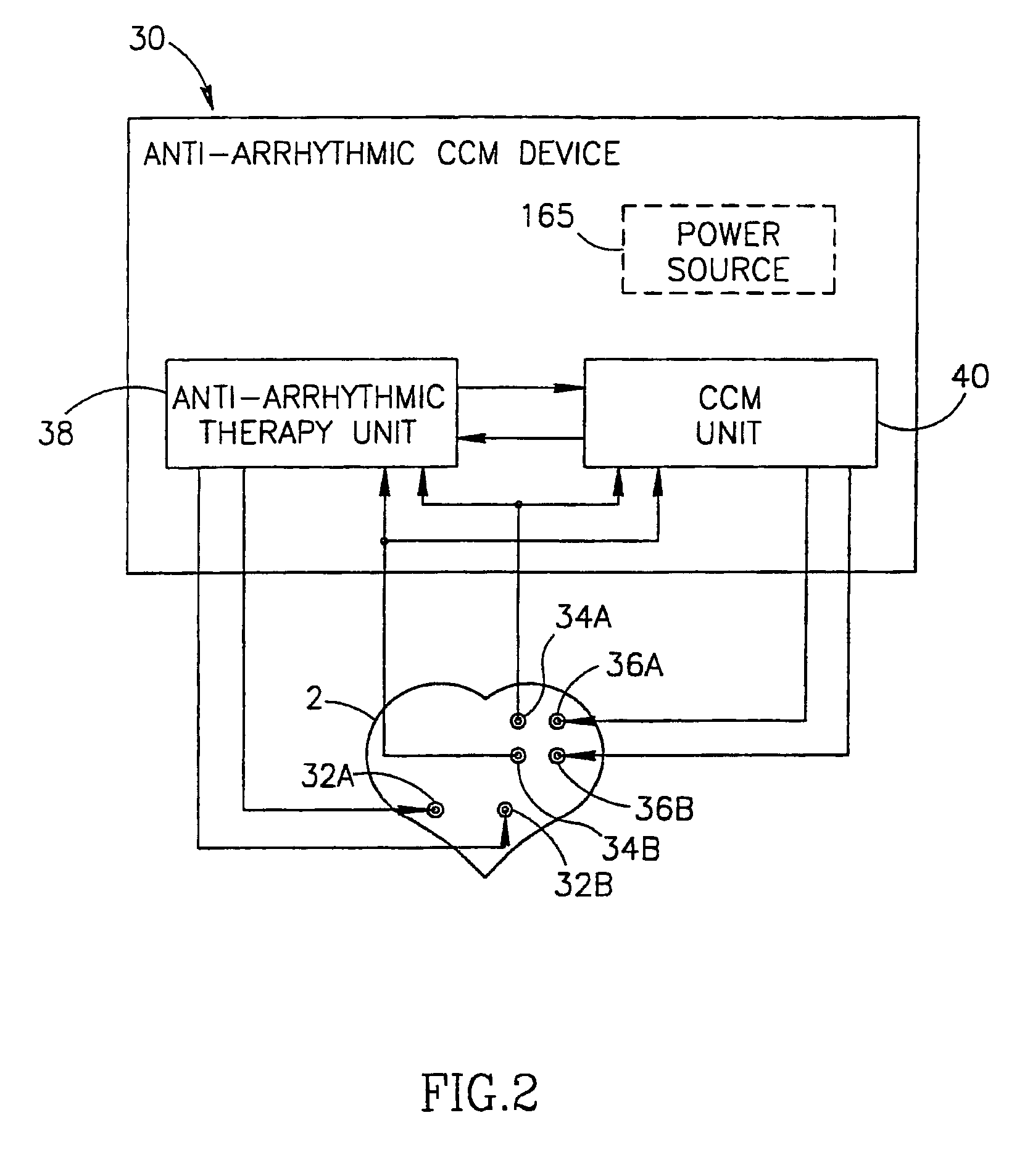Cardiac contractility modulation device having anti-arrhythmic capabilities and method of operating thereof
a contractility modulation and cardiac technology, applied in the field of antiarrhythmic cardiotherapy devices, can solve the problems of cardiac tachy-arrhythmias being delivered to the heart without defibrillating shock therapy, and the heart being affected by cardiac tachy-arrhythmia detection and/or classification, etc., and achieve the effect of modulating the contractility
- Summary
- Abstract
- Description
- Claims
- Application Information
AI Technical Summary
Benefits of technology
Problems solved by technology
Method used
Image
Examples
Embodiment Construction
[0075]The following terms are used throughout the application:
[0076]
TermDefinitionACAlternating CurrentAGCAutomatic Gain ControlAICDAutomatic Internal Cardioverter DefibrillatorATCAutomatic Threshold ControlATPAnti-Tachycardia PacingCCMCardiac Contractility ModulationCHFCongestive Heart FailureDCDirect CurrentECDExternal Cardiac DefibrillatorETCExcitable Tissue ControlICDInternal Cardiac DefibrillatorLUTLook Up TableSVTSupra Ventricular TachycardiaVFVentricular FibrillationVTVentricular Tachycardia
[0077]Reference is now made to FIG. 1 which is a schematic functional block diagram illustrating a prior art defibrillator device.
[0078]The defibrillator device 1 includes a filter and voltage protection unit 3 which is suitably electrically connected to sensing electrodes 4A and 4B which are implanted in or about the heart 2. The filter and high voltage protection unit 3 may includes various types of filtering circuitry for filtering the electrical signals sensed by the sensing electrodes...
PUM
 Login to View More
Login to View More Abstract
Description
Claims
Application Information
 Login to View More
Login to View More - R&D
- Intellectual Property
- Life Sciences
- Materials
- Tech Scout
- Unparalleled Data Quality
- Higher Quality Content
- 60% Fewer Hallucinations
Browse by: Latest US Patents, China's latest patents, Technical Efficacy Thesaurus, Application Domain, Technology Topic, Popular Technical Reports.
© 2025 PatSnap. All rights reserved.Legal|Privacy policy|Modern Slavery Act Transparency Statement|Sitemap|About US| Contact US: help@patsnap.com



